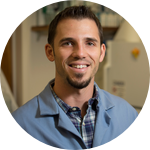Please wait...
About This Project
Ever wondered why some people build muscle faster than you? We know some people have more fast-twitch muscle fibers than others and muscle adaptations are regulated by your myonuclei (the cell components responsible for DNA replication, transcription, and protein synthesis). Thus, we believe the number of myonuclei differs between fiber types, and this explains much of how and why muscle grows and recovers at different rates between people, and between exercise programs!

Browse Other Projects on Experiment
Related Projects
Toward ethical and affordable antivenom solutions: Can anti-toxin be animal cruelty-free?
Snakebite envenoming causes over 100,000 deaths annually, yet current antivenoms depend on animal plasma...
Microplastics: Can engineered enzymes remove microplastics from the human body?
Polyethylene terephthalate (PET) microplastics have been detected in human blood and tissues, and linked...
Shutting down cancer’s recycling system with exosome-based therapy
Pancreatic cancer is one of the deadliest cancers because its cells survive by recycling their own components...





